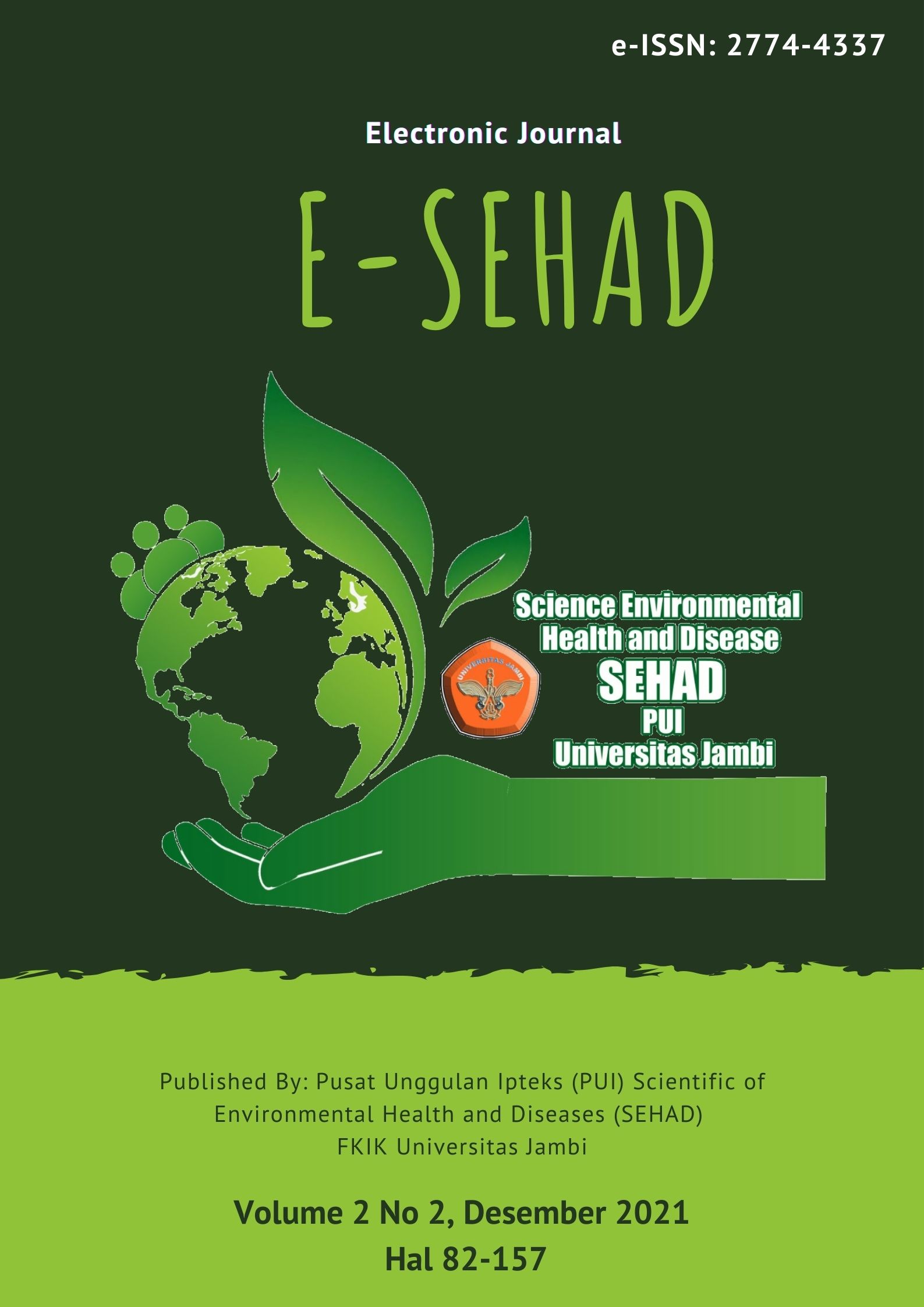PENGARUH PERTUMBUHAN PENDUDUK DAN PERUBAHAN IKLIM TERHADAP KETERSEDIAAN AIR
DOI:
https://doi.org/10.22437/esehad.v2i2.16918Keywords:
Keyword: Population Growth, Climate ChangeAbstract
ABSTRACT
Population growth and global climate change are problems faced by every country in the world. The availability and quality of water are the main factors for the sustainability of industrial and household life. Changes in temperature have a predictable impact on water quantity and quality. Therefore, integrated policies and actions are needed to address the problem of water scarcity and contamination.
Keyword: Population Growth, Climate Change
ABSTRAK
Pertumbuhan penduduk dan perubahan iklim global merupakan permasalahan dihadapi oleh setiap negara di dunia. Ketersediaan dan kualitas air merupakan faktor utama untuk keberlanjutan kehidupan industri dan rumah tangga. Perubahan suhu memiliki dampak yang dapat diprediksi terhadap kuantitas dan kualitas air. Oleh karena itu diperlukan kebijakan dan tindakan yang terintegrasi untuk mengatasi masalah kelangkaan dan kontaminasi air.
Kata Kunci: Pertumbuhan Penduduk, Perubahan Iklim
Downloads
References
REFERENSI
Nakićenović N, Intergovernmental Panel on Climate Change (eds). Special report on emissions scenarios: a special report of Working Group III of the Intergovernmental Panel on Climate Change. Cambridge ; New York: Cambridge University Press, 2000.
Jiang L, Hardee K. How do Recent Population Trends Matter to Climate Change? Popul Res Policy Rev 2011; 30: 287–312.
Rosa EA, York R, Dietz T. Tracking the Anthropogenic Drivers of Ecological Impacts. AMBIO J Hum Environ 2004; 33: 509–512.
Huntington TG. Evidence for intensification of the global water cycle: Review and synthesis. J Hydrol 2006; 319: 83–95.
Priyantha Ranjan S, Kazama S, Sawamoto M. Effects of climate and land use changes on groundwater resources in coastal aquifers. J Environ Manage 2006; 80: 25–35.
Schleich J, Hillenbrand T. Determinants of residential water demand in Germany. Ecol Econ 2009; 68: 1756–1769.
Sun Y, Tong STY, Fang M, et al. Exploring the effects of population growth on future land use change in the Las Vegas Wash watershed: an integrated approach of geospatial modeling and analytics. Environ Dev Sustain 2013; 15: 1495–1515.
Ding Y, Tang D, Dai H, et al. Human-Water Harmony Index: A New Approach to Assess the Human Water Relationship. Water Resour Manag 2014; 28: 1061–1077.
Srinivasan V, Seto KC, Emerson R, et al. The impact of urbanization on water vulnerability: A coupled human–environment system approach for Chennai, India. Glob Environ Change 2013; 23: 229–239.
Si P, Zheng Z, Ren Y, et al. Effects of urbanization on daily temperature extremes in North China. J Geogr Sci 2014; 24: 349–362.
Thomas J-S, Durham B. Integrated Water Resource Management: looking at the whole picture. Desalination 2003; 156: 21–28.
Okello C, Tomasello B, Greggio N, et al. Impact of Population Growth and Climate Change on the Freshwater Resources of Lamu Island, Kenya. Water 2015; 7: 1264–1290.
Duran-Encalada JA, Paucar-Caceres A, Bandala ER, et al. The impact of global climate change on water quantity and quality: A system dynamics approach to the US–Mexican transborder region. Eur J Oper Res 2017; 256: 567–581.









